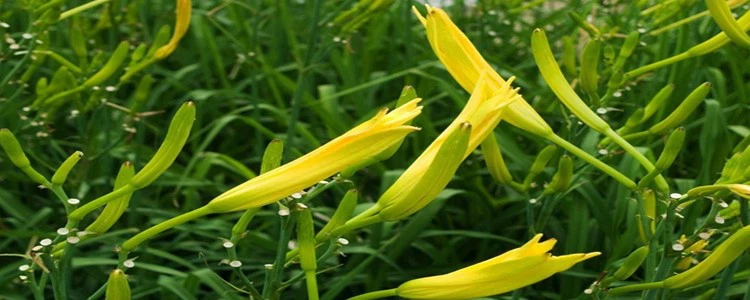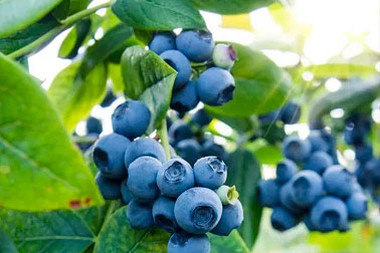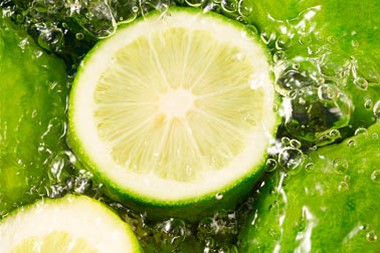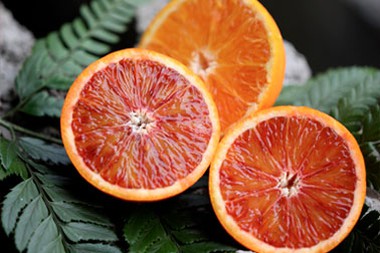Unveiling the Hair Growth Benefits of Day Lily Extract Powder
Introduction In the pursuit of luscious and vibrant hair, individuals often seek natural remedies and botanical extracts that can promote hair growth. One such extract that has gained attention in recent years is Day Lily Extract. Derived from the Hemerocallis plant, it is renowned for its potential benefits in nourishing the scalp and stimulating hair growth. In this article, we will explore the various advantages of it for hair growth and understand how it can contribute to healthier and fuller-looking hair.
Scalp Nourishment it contains a rich array of essential nutrients, including vitamins, minerals, and antioxidants. These components work in harmony to nourish the scalp and provide the ideal environment for hair follicles to thrive. Proper nourishment of the scalp promotes stronger and healthier hair growth, reducing the likelihood of breakage and hair loss.
Anti-Inflammatory Properties Inflammation can disrupt the natural hair growth cycle, leading to conditions such as hair thinning and baldness. it exhibits potent anti-inflammatory properties, which help soothe the scalp and alleviate inflammation. By reducing scalp inflammation, the extract encourages optimal hair growth conditions and supports the overall health of the hair follicles.
Moisture Retention One of the key factors for healthy hair growth is maintaining adequate moisture levels in the scalp and hair strands. it contains natural humectants that help retain moisture, preventing dryness and brittleness. The moisturizing properties of the extract contribute to enhanced hair elasticity and minimize the risk of hair breakage.
Improved Blood Circulation Proper blood circulation is essential for delivering oxygen and nutrients to the hair follicles. it is believed to enhance blood flow to the scalp when applied topically. Improved circulation ensures a sufficient supply of nutrients to the hair follicles, promoting healthy hair growth and strengthening the roots.
Antioxidant Defense The presence of antioxidants in it protects the scalp and hair follicles from oxidative stress caused by free radicals. Oxidative stress can lead to premature aging of the hair follicles, resulting in weakened hair growth. The antioxidants in it scavenge free radicals, preventing damage and maintaining the vitality of the hair follicles.
Hair Thickness and Volume it is known to possess properties that enhance hair thickness and volume. By strengthening the hair shafts and stimulating the production of keratin, a key structural protein in hair strands, the extract can contribute to thicker and fuller-looking hair. Additionally, it may help add body and bounce to the hair, enhancing overall volume.
Scalp Health A healthy scalp is crucial for optimal hair growth. Day Lily Extract's naturally antibacterial and antifungal properties help maintain a clean and balanced scalp environment. It helps combat scalp conditions like dandruff, itching, and flakiness, ensuring the follicles are free from potential impediments to hair growth.

Understanding the Distinction between a Lily and a Daylily
Lilies and daylilies are two distinct plant species that often confuse individuals due to their similar names and appearance. While both belong to the botanical family Liliaceae, they possess several differences in terms of their physical characteristics, growth habits, and blooming patterns. This article aims to shed light on these disparities and provide a comprehensive understanding of the dissimilarities between lilies and daylilies.
Taxonomy and Classification Lilies (Lilium) and daylilies (Hemerocallis) are classified under the same plant family, Liliaceae, but belong to different genera. Lilies are herbaceous flowering plants with true bulbs, while daylilies are rhizomatous plants that lack true bulbs.
Physical Characteristics Lilies are characterized by their tall stems, usually ranging from 2 to 6 feet in height, with prominent flowers that bloom at the top. Their flowers are generally large and showy, with six petals arranged in a symmetrical pattern. On the other hand, daylilies have shorter stems, usually around 1 to 4 feet tall, and their flowers bloom on branching scapes. Daylily flowers consist of three petals and three sepals, and they often exhibit a wide range of colors and patterns.
Flowering Period Lilies are known for their relatively short blooming period, usually lasting for a few weeks. Each stem typically produces a single cluster of flowers at its apex. In contrast, daylilies are renowned for their extended flowering period, which can span several weeks or even months. Daylilies often produce multiple flowering scapes per plant, with each scape bearing multiple flowers that open and close within a 24-hour period.
Flower Longevity Lily flowers have a relatively short lifespan, typically lasting for a few days to a couple of weeks. Once a lily flower blooms, it gradually fades and withers away. In contrast, daylily flowers exhibit remarkable longevity, typically lasting only for a day before wilting. However, daylilies compensate for this short lifespan by producing multiple flowers on a single scape, ensuring a continuous display throughout their blooming season.
Foliage Lilies and daylilies can be distinguished by their foliage as well. Lily leaves are generally long, narrow, and arranged in whorls or spirals along the stem. They often remain green and intact throughout the growing season. Daylilies, on the other hand, have strap-
like leaves that emerge in a basal rosette from the rhizome. The leaves are typically deciduous, with old foliage dying back as new leaves emerge.
Growth Habits Lilies are perennial plants that grow from bulbs, which store nutrients and allow them to survive through dormant periods. They propagate through the bulbs, forming new bulbs and bulblets. Daylilies, on the other hand, are also perennial but grow from rhizomes. Rhizomes are underground stems that give rise to new shoots and roots. Daylilies can form dense clumps over time as their rhizomes multiply.
Conclusion In summary, while lilies and daylilies share some similarities due to their membership in the same botanical family, they have distinct characteristics that set them apart. Lilies have tall stems with large, showy flowers that bloom for a short period, whereas daylilies have shorter stems with multiple flowers that bloom over an extended period. Understanding the differences between these two plant species allows gardeners and enthusiasts to appreciate their unique beauty and incorporate them appropriately into their landscapes or gardens.
Where do daylilies do best?
Daylilies, scientifically known as Hemerocallis, are vibrant and resilient flowering plants that are widely cultivated for their beauty and versatility. They belong to the family Liliaceae and are native to Asia, particularly China, Korea, and Japan. Daylilies have been cherished for centuries for their exquisite blooms, which come in a wide range of colors, shapes, and sizes. They are perennial plants that thrive in various climates and soil conditions, making them a popular choice among gardeners and landscaping enthusiasts worldwide.
Sunlight plays a crucial role in the growth and development of daylilies. These plants thrive in areas with abundant sunlight. They typically require at least six hours of direct sunlight per day to produce optimal blooms. Therefore, it is recommended to plant daylilies in locations that receive full sun or partial shade. However, they can tolerate some shade, especially in regions with intense heat or where the afternoon sun is particularly harsh. In such cases, morning sun exposure is preferable to ensure healthy growth and abundant flowering.
Regarding temperature, daylilies exhibit impressive adaptability. They can withstand a wide range of climates, from cold northern regions to hot and humid southern areas. They are known to be hardy perennials that can survive freezing temperatures and even thrive in regions with harsh winters. However, daylilies also perform well in warm climates, provided they receive adequate water and protection from excessive heat.
In terms of soil conditions, daylilies are relatively adaptable. They can grow in a variety of soil types, including loam, clay, and sandy soils. However, they prefer well-draining soil that retains some moisture but does not become waterlogged. Soil with a slightly acidic to neutral pH level is ideal for daylilies. Gardeners can improve soil quality by adding organic matter, such as compost or well-rotted manure, to enhance drainage and nutrient retention.
Proper watering is essential for the health and vigor of daylilies. While they can tolerate some drought conditions, regular watering is necessary, especially during dry spells or periods of intense heat. Deep watering once or twice a week is usually sufficient, ensuring that the soil is moist to a depth of about 6 to 8 inches. Overwatering should be avoided, as it can lead to root rot and other issues. Mulching around the plants can help conserve moisture and regulate soil temperature, benefiting the overall growth of daylilies.
Daylilies are relatively low-maintenance plants, but they benefit from occasional fertilization. Applying a balanced slow-release fertilizer in early spring or after the plants have finished blooming can provide the necessary nutrients for healthy growth and abundant flowering. It is important to follow the manufacturer's instructions for proper application rates. Additionally, removing spent blooms, known as deadheading, can encourage continuous blooming and prevent the formation of seed pods, allowing the plants to redirect energy toward foliage and root development.
When it comes to landscape design, daylilies offer numerous possibilities. They are suitable for various garden styles, including formal gardens, cottage gardens, and naturalistic landscapes. Daylilies can be planted in borders, beds, or containers, adding color and texture to the surroundings. They also complement other perennial flowers, ornamental grasses, and shrubs, creating beautiful combinations and visual interest. With their diverse flower forms and colors, daylilies can be used to create focal points, mass plantings, or mixed borders, showcasing their versatility in garden design.
In conclusion, daylilies thrive best in locations with ample sunlight, although they can tolerate some shade. They are adaptable to a wide range of climates, from cold to hot and humid regions. Daylilies prefer well-draining soil with a slightly acidic to neutral pH level, and they benefit from regular watering and occasional fertilization. These resilient plants offer versatility in landscape design, making them a popular choice among gardeners worldwide. Whether in formal gardens or naturalistic landscapes, daylilies add beauty and charm with their stunning blooms, enriching outdoor spaces with their vibrant colors and captivating presence. And Day Lily Extract Powder offers a multitude of benefits for promoting hair growth and maintaining healthy hair. From nourishing the scalp and improving blood circulation to providing antioxidant protection and enhancing hair thickness, the extract's diverse properties make it a valuable ingredient in hair care products. Incorporating it into hair care routines may help individuals achieve stronger, healthier, and more vibrant hair.
Contact us selina@ciybio.com.cn



